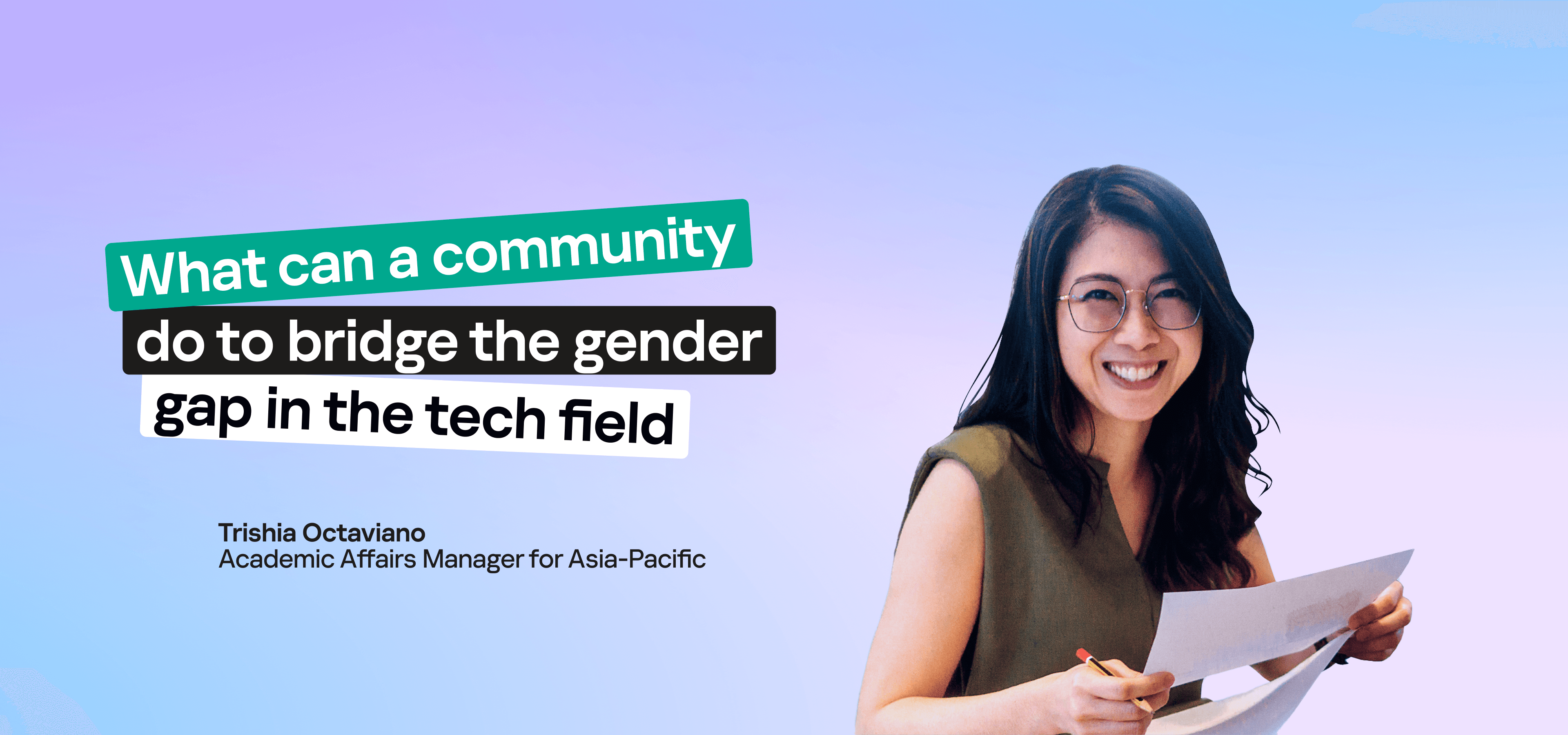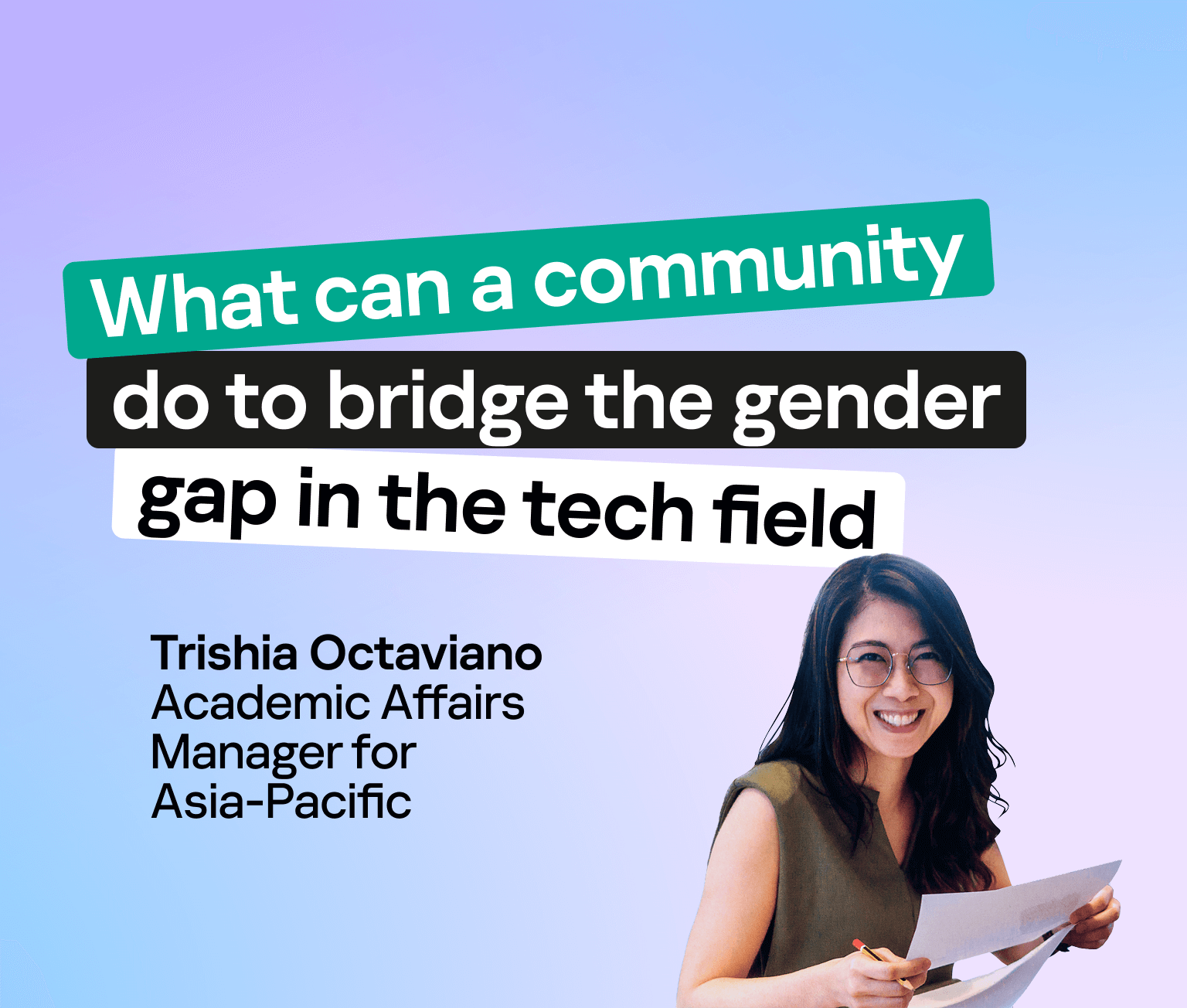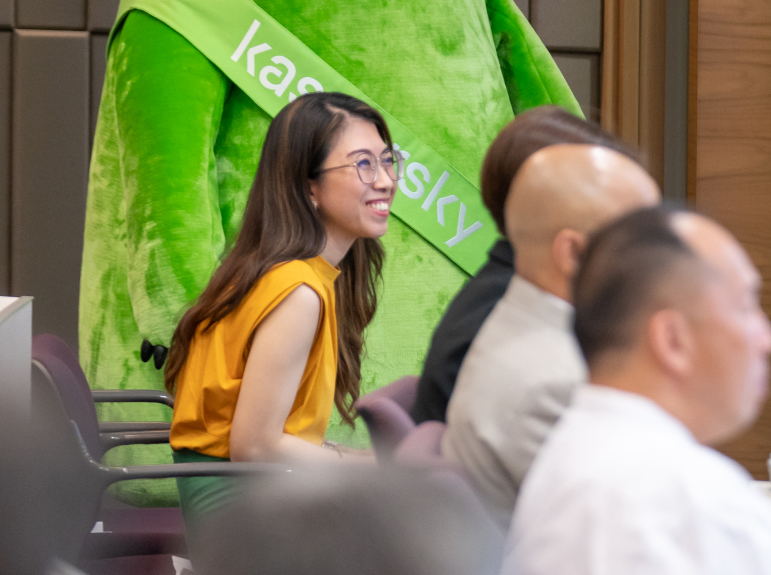


Being a part of the Kaspersky Academy team, Trishia is responsible for building strategic relationships with educational and government institutions, commercial entities, and non-profit organizations, essentially making cybersecurity knowledge and skills easily accessible to various communities. She discusses what measures people can take to bridge the existing gender gap.
Part of my role is establishing long-term strategic relationships with key academic partners across the Asia-Pacific region. In this capacity, I collaborate with universities and technical academic institutes to develop and deliver educational and research projects in tech.
Every time I visit a technical university for a training or tutorial, and I enter a lecture room and see an overwhelming number of male students, but only a handful are female. One can easily tell that the gender gap in tech starts in the classroom.
Even though these young women are a few, they are extremely brilliant and the most active in their group. They make sure their presence is felt. They ask critical questions during and even after the lecture. They do their homework. They are not afraid to seek knowledge. Seeing their eyes burning with a desire to learn new things is empowering.
However, the challenges are still there, of course. Navigating a career in tech as a woman is never an easy task.

It is a privilege for me to be immersed in different cultural settings. In this day and age, women are still just called to fit into whatever environment we face. We are expected to conform to gender and cultural norms and are placed in a box. Through my role at Kaspersky, I have the opportunity to view the tech world through a multicultural lens. I have been given the platform to sow seeds to the younger generation, so women play an elemental role in the future of technology.
I have had conversations with them, and they have shared their stories and struggles with me. Based on their shared experiences, there are two aspects of the gender problem in tech.
Firstly, many times, even though they are eager to learn and pursue a career in tech, they don’t have anyone to talk to and share their aspirations with. This means there needs to be more role models they can relate to and learn from. They may also have limited access to mentoring programs that can connect them with practicing industry mentors. Access to mentorship can open doors to opportunities, and allow them to be part of a community of like-minded women. In this way, role models can be just within their reach, and directly demonstrate how to thrive in the ever-evolving, complex, and highly competitive IT industry.
To address this situation, a lot of work needs to be done, and this is where academic institutions can play a role in overcoming this barrier and encourage women to join the field. They can start by having a more targeted approach to recruitment, introducing special support programs, and create a gender-inclusive educational environment. In addition, they can invite more women IT professionals to speak at their institutions and be part of a mentorship program. Studies have shown that girls and young women become more passionate in IT, and STEM in general, when they have female role models who have established their careers in the field. These proactive steps will make women feel more welcomed and motivated to pursue careers in technology, and the perception that it is a male-dominated profession will diminish.
Secondly, what we have observed in the industry is that women don’t stay here for very long. It’s one thing for them to get into the field, but another for them to stay. While the number of women who graduate with STEM degrees and enter STEM jobs is increasing, data shows that a significant number of women leave the field within a year of graduating. For example, in 2021 around 38 percent of STEM graduates were women, but a year later, only about 32 percent of STEM jobs were held by female employees.
What comes next is even more challenging because, even if women manage to join the industry and stay for more than a year, it is extremely difficult for them to progress in their careers. The thing is, women are generally underrepresented in top positions, especially in STEM fields. They make up about 30 percent of entry-level workers and almost a third of senior workers, but the share of women decreases to one-quarter when it comes to manager or director positions. The representation of women in higher leadership roles like VP and C-suite drops even further to about 18 percent and 12 percent, respectively.
 To overcome this, not only women, but also the government, universities, and industrial organizations must work together:
To overcome this, not only women, but also the government, universities, and industrial organizations must work together:
- Identifying the skills that are needed in the industry. After studying which specialists are scarce in this field, governments must create or improve training programs that will equip women with the necessary skills to join, and stay in the tech industry. By doing so, these specialists will be highly sought after, regardless of their gender, and women will be aware that they are valued in this field.
- Upskilling. Women don’t have enough help to advance in their careers and move up the career ladder. To assist them with this, training and support programs are necessary for them to transition into a full-time job, a managerial position, or a supervisory position.
- Mentoring. Having a mentor of the same gender establishes a basis for understanding experiences or challenges in the workplace specific to the mentee. Women may want to find a senior female mentor who can offer insights into how she advanced in a predominantly male workforce, for example. Going up against that very high and thick glass ceiling, we cannot do it alone. But if you have the support of solid and powerful women, we can go up together and gradually break that glass.

Recent studies suggest that society will require approximately 131 years to address the current gender gap. This is a wake-up call. Considering the potential contributions of women in the tech world, imagine how much three generations would missed out on if this gap would not be addressed. From the standpoint of multistakeholder public policy, the participation of different actors is crucial for effecting positive change. Creating change that is impactful and lasting requires a concerted effort.
Everyone must take action – now.